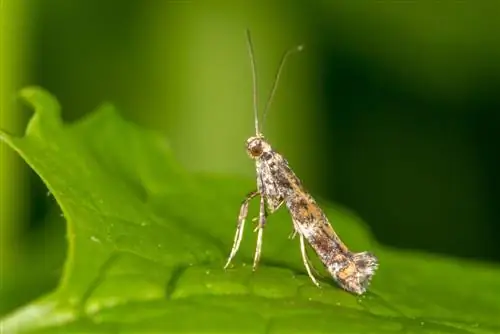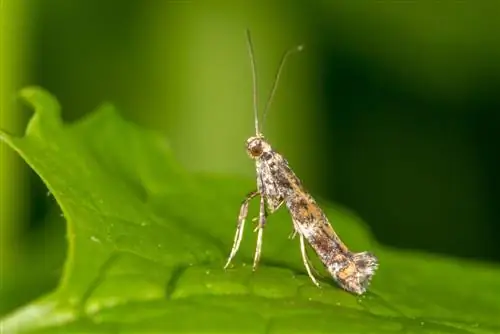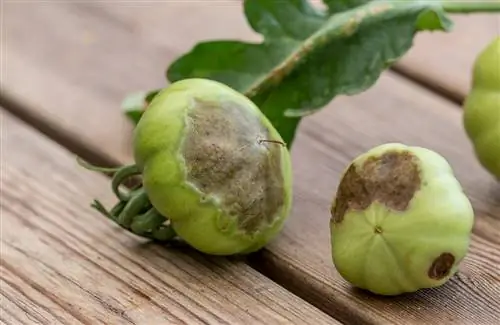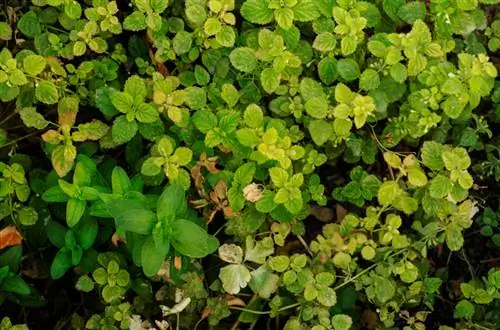- Author admin [email protected].
- Public 2023-12-16 16:46.
- Last modified 2025-01-23 11:21.
The common lilac (Syringa vulgaris) is actually a very robust, long-lasting plant that is rarely affected by a wide variety of diseases. An infection is therefore often due to incorrect and inadequate care, an unsuitable location or unfavorable weather.

What causes brown spots on lilac leaves and how to treat them?
Brown spots on lilac leaves can be caused by pathogens such as Pseudomonas syringae or Ascochyta syringae, as well as pests such as the lilac leaf miner. Countermeasures include removing infected shoots, using preparations containing copper or neem sprays.
Leaf spots caused by pathogens
Brown spots on the leaves can be caused by various bacteria, fungi or even viruses. The specific pathogen is difficult for a layperson to diagnose with the naked eye, but an expert gardener will be able to help you in this regard.
Pseudomonas syringae
The fungal pathogen causes a disease called “lilac blight” or “bacterial shoot rot”. It begins at the base of young shoots, which suddenly take on a stripy, dark brown to black color from May onwards. Later, irregular, dark brown spots appear on the stems and leaves, and the inflorescences also brown and wilt. The disease often occurs after very frosty or wet winters, and lilacs that have been fertilized with a high concentration of nitrogen are also at risk.
How to remedy the situation: Cut the affected lilac back deep into the he althy wood and burn the cuttings. To prevent this, frost-prone locations and high-nitrogen fertilization should be avoided.
Ascochyta syringae
This fungus causes leaf spot disease, in which the young shoots initially wilt, then turn brown and die. The leaves are also affected; they develop irregularly shaped, blackish-brownish spots and the edges curl up.
How to remedy the situation: The affected lilac must be cut deep down to the he althy wood, the cuttings must be burned or disposed of in another way (but not in the compost!). Furthermore, treat the plant with a copper-containing preparation (€62.00 on Amazon), which you can get from a gardening store.
Lilac Leafminer
The lilac moth is one of the most common pests and does not only occur on lilacs. They also find their feeding marks on ash trees, forsythia, deutzia, snowberries and privet. The first damage occurs in early summer when large, irregular, brown spots become visible on the leaves. Later the leaves become stunted and dry. If you look closely you can see caterpillars (for example with the help of a magnifying glass).
How to remedy the situation: After an infestation in the previous year, you should spray neem several times the following year when the leaves emerge. No further measures are necessary.
Tip
Old lilac varieties of the species Syringa vulgaris and the wild forms are generally more robust and less susceptible to diseases than new varieties or hybrids.






